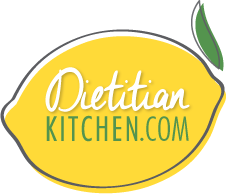Well, most of the ants...
As you can see, most of the ants chose the real butter-- and lived to eat it! There weren't many takers on the reduced-fat variety and the little guys that chose margarine...well, you can see what happened to them!
What's the difference between margarine and butter? Butter is animal-based and mostly saturated fat and margarine is plant-based and mostly unsaturated fat. The problem with margarine is that the process by which it's made turns it into an artery-clogging trans fat.
The margarine craze was born following the cholesterol-heart disease hypothesis which I discussed in a previous post. We all thought that saturated fat and cholesterol (found in real butter) was bad for our heart health so we replaced it with highly processed vegetable oils and glued it all together by a process called hydrogenation (this is the process that makes trans fats- the artery clogging bad guys). This excludes the naturally occurring trans fats found in animals (like the trans fat found in your juicy sirloin steak) which are harmless. Trans fats are found in stick margarine as well as packaged, processed foods like crackers, cookies, donuts, etc. The main reason they are added to so many foods is for shelf stability. Think about it: If it can stay on the grocery store shelf for years on end and still be in tact when you open it, imagine what it's doing to your insides!
How can you tell if the product you're eating contains trans fat?
Don't let the 0 g trans fat on the front label or the nutrition facts panel fool you. Marketing companies can claim 0 g trans fat on a label if the product has .5 g trans fat or less per serving. That adds up if you eat more than one serving's worth. To truly tell if the double fudge cookies your about to indulge upon contain trans fat, look at the ingredients list for the words "hydrogenated" or "partially hydrogenated". This means the product has undergone the making of a trans fat. Aim for no more than 2 g trans fat per day and you're arteries will thank you!
But what about tub margarine spreads that claim heart health benefits? Not to point out specific brands, but some of them claim to improve your ticker by way of the plant stanols and sterols they contain. These are good for heart health, but unfortunately you would have to consume about 6 tablespoons to reap the benefits. That's a lot of "butter" on your toast.
As for reduced-fat butters and foods that are claimed to be reduced-fat, low-fat, or fat-free: be cautious. You would be surprised at how many dropped jaws and blank stares I get from patients after I suggest to them to replace their fat-free foods with the full-fat, REAL variety. To make a long story short, when fat is taken out of products that should contain fat naturally, they have to replace it with something other than air. What they are replacing it with are more chemicals, stabilizers, carbohydrates, and words we can't pronounce. Try this on for size: the next time you go grocery shopping, compare a full-fat salad dressing to a fat-free version and you will discover a laundry list of ingredients in the fat-free version as opposed to the regular. I explain to my patients, when in doubt, choose the real thing!
So what kind of butter should we consume?
Grass-fed butter is best, although a bit pricier, running you a couple bucks per stick. However, you can stretch it a long way if you use small amounts. Keep in mind, just a tablespoon of butter has about 100-120 calories! When you eat grass-fed butter, you are rewarded with lots of nutrition. Grass-fed butter contains fat-soluble vitamins A, D, E and K, omega-3's, and CLAs (conjugated linoleic acids). CLAs have been shown in several studies to inhibit plaque and lipid (fat) formation in artery walls; thus, improving heart health. It has many other benefits too!
So no need to fear butter. When in doubt, do what the ants do!
Leslie


